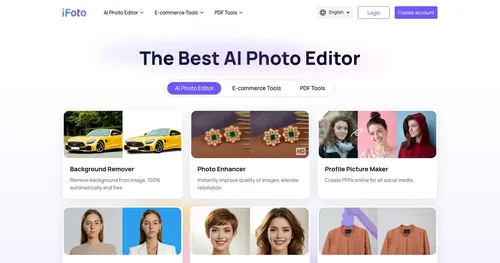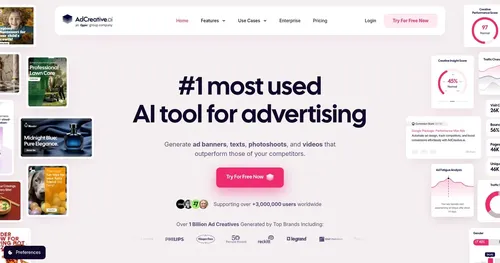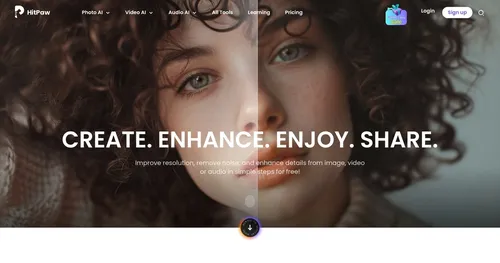Jaided AI
Jaided AI is like that unassuming friend who quietly steals the show with unexpected brilliance. Founded in 2020, this company focuses on making AI accessible, particularly through its OCR offerings like EasyOCR and Identity Reader. I think what grabs you first is the sheer ambition: they’re not just scanning text from images, they’re pushing for accuracy that can hit over 99% when fine-tuned. Their open-source EasyOCR project, used by over 10,000 developers, supports more than 80 languages, from Arabic to Vietnamese, and handles everything from dense documents to natural scene text. It’s a tool that feels both global and precise, a rare combo.
What’s compelling is how Jaided AI balances accessibility with power. The EasyOCR library is free, easy to set up with a simple pip install, and integrates with Python environments effortlessly. Developers on Reddit rave about its plug-and-play nature, especially for quick prototyping. The Enterprise version, meanwhile, offers bespoke solutions like Layout Analysis and Table Extraction, which are lifesavers for businesses dealing with complex forms or invoices. Identity Reader, designed for KYC processes, pulls key details from IDs and passports with startling accuracy. I was impressed by a YouTube demo showing it extracting text from a blurry ID photo in seconds. That’s the kind of practical magic that makes you sit up.
Not everything’s perfect, though. The open-source version, while robust, can be a bit sluggish on older hardware, especially without a GPU. Some forum posts on X mention setup hiccups with specific language models, like getting Cyrillic scripts to play nice. The Enterprise version, while customizable, requires a consultation to get started, which might feel like a hurdle for smaller teams. Compared to competitors like ABBYY FineReader or Tesseract, Jaided AI stands out for its open-source roots and language support, but ABBYY’s polished UI and Tesseract’s free maturity give them an edge for some users.
The surprise here? Jaided AI’s commitment to open-source collaboration. Their GitHub repo is a hive of activity, with developers worldwide contributing to EasyOCR’s evolution. It’s not just a tool, it’s a community-driven project that feels alive. For businesses, the cloud or on-premise API options add flexibility, though you’ll need to weigh the cost of fine-tuning against your budget. My advice: if you’re a developer, start with EasyOCR OSS to test the waters. For businesses, reach out for a demo of EasyOCR Enterprise to see how it fits your workflow. It’s worth the conversation.
What are the key features? ⭐
- EasyOCR OSS: Extracts text from images with support for 80+ languages.
- EasyOCR Enterprise: Offers fine-tuned OCR with over 99% accuracy for business use.
- Identity Reader: Extracts key data from IDs and passports for KYC processes.
- Layout Analysis: Recognizes document structures like tables and forms.
- QR Code Extraction: Reads QR codes and barcodes alongside text.
Who is it for? 🤔
Examples of what you can use it for 💭
- Developers: Use EasyOCR OSS to prototype text extraction for multilingual apps.
- Compliance Teams: Leverage Identity Reader to streamline KYC document verification.
- Data Analysts: Apply EasyOCR Enterprise to extract data from complex forms.
- Retail Businesses: Use QR Code Extraction to process digital receipts efficiently.
- Multinational Firms: Utilize 80+ language support for global document processing.
Pros & Cons ⚖️
- Supports 80+ languages
- Open-source and free
- High accuracy with tuning
- Slow without GPU
- Limited beginner docs
FAQs 💬
Related tools ↙️
-
 iFoto
An AI-powered photo editing tool specifically designed for e-commerce businesses
iFoto
An AI-powered photo editing tool specifically designed for e-commerce businesses
-
 Imagewith.AI
An online tool that uses some fancy tech to make your photos look better
Imagewith.AI
An online tool that uses some fancy tech to make your photos look better
-
The Influencer AI Generates consistent AI influencers for photos, videos, and product integrations
-
 Profile Pic Maker
Create an awesome AI profile picture with features like background remover and face enhancer
Profile Pic Maker
Create an awesome AI profile picture with features like background remover and face enhancer
-
 AdCreative.ai
AI tool that generates on-brand advertising creatives and banners
AdCreative.ai
AI tool that generates on-brand advertising creatives and banners
-
 HitPaw Online
Improve resolution, remove noise, and enhance details in your images
HitPaw Online
Improve resolution, remove noise, and enhance details in your images

